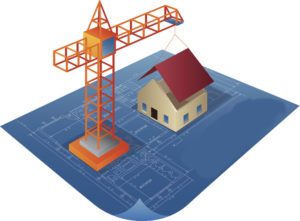 Washington D.C.—New findings from the National Home Builders Association (NAHB) Home Building Geography Index (HBGI) show that all small and large metro urban, suburban and rural regional submarkets peaked in the second quarter of 2021. While that expansion has cooled somewhat, growth rates in all markets remained in double-digits in the final quarter of 2021. In contrast, multi-family growth in all of these markets has been surging since the second quarter as some housing demand returned back to higher density markets, according to the NAHB.
Washington D.C.—New findings from the National Home Builders Association (NAHB) Home Building Geography Index (HBGI) show that all small and large metro urban, suburban and rural regional submarkets peaked in the second quarter of 2021. While that expansion has cooled somewhat, growth rates in all markets remained in double-digits in the final quarter of 2021. In contrast, multi-family growth in all of these markets has been surging since the second quarter as some housing demand returned back to higher density markets, according to the NAHB.
“As the economy reopened in most parts of the nation during the latter part of 2021, solid home building activity occurred in all regional submarkets,” said Robert Dietz, chief economist, NAHB. “Multi-family production posted strong gains in all regional markets as the demand for apartments increased. Meanwhile, supply side constraints that include ongoing labor shortages and a lack of key housing products that include garage doors, appliances and windows has delayed single-family construction times across the nation and put upward pressure on home prices.”
According to Jerry Konter, chairman, NAHB, the lack of resale inventory in markets across the country has sustained demand for single-family and multi-family construction. “Higher construction costs, particularly for lumber and OSB, along with a limited availability of building materials, is making it more difficult for builders to meet market demand. Policymakers must work to alleviate supply chain bottlenecks that are aggravating the housing affordability crisis,” Konter said.
While growth rates for single-family and multifamily production remained solid in the second half of 2021, Dietz cited key factors why production activity for these types of housing were trending in opposite directions.
“Single-family home building activity surged in the wake of the Covid crisis, as interest rates fell and prospective home buyers sought more space,” Dietz said. “The rebound for multifamily construction lagged somewhat as housing demand had shifted to lower density markets. As some of that demand returns, a rebound for apartment building has occurred.”
According to the NAHB, the HBGI is a quarterly measurement of building conditions across the country and uses county-level information about single- and multi-family permits to gauge housing construction growth in various urban and rural geographies.
Key findings from the fourth quarter HBGI show that four-quarter moving average single-family growth rates in:
- Large metro core counties fell from 26.3% in the second quarter to 13.0% in the fourth quarter
- Large metro suburban counties fell from 31.6% in the second quarter to 13.2% in the fourth quarter
- Small metro core counties fell from 27.7% in the second quarter to 16.7% in the fourth quarter
- Small metro outlying counties fell from 31.8% in the second quarter to 20.3% in the fourth quarter
According to the NAHB, the fourth quarter HBGI finds that 51.1% of single-family home building occurred within large metropolitan statistical areas (MSAs), 38.4% in small MSAs and 10.5% in rural markets and small towns.
As the economy more fully reopened in the wake of the Covid crisis, the geography of multifamily housing demand shifted with a greater concentration in high density markets., according to the NAHB. While multi-family production also increased in rural areas, growth rates were particularly notable in large metro markets, where the largest share of apartment construction typically occurs. The HBGI shows that:
- Large metro core counties rose from 1.2% in the second quarter to 21.8% in the fourth quarter
- Large metro suburban counties increased from 4.1% in the second quarter to 21.8% in the fourth quarter
- Small metro core counties increased from 16.0% in the second quarter to 34.9% in the fourth quarter
- Small metro outlying counties jumped from 23.7% in the second quarter to 70.4% in the fourth quarter
The fourth quarter HBGI finds that 66.5% of multi-family development occurred within large metropolitan statistical areas (MSAs), 27.4% in small MSAs and 6.1% in rural markets and small towns, according to the NAHB.
